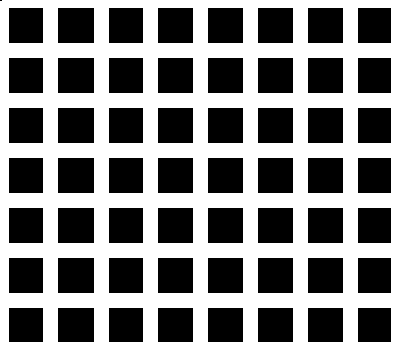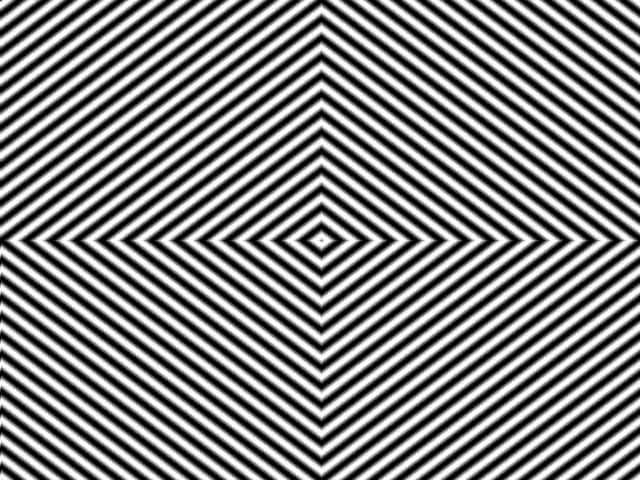One of the most fascinating ways to size up the workings of the brain is by exploring optical illusions, the strange images that aren't quite what they seem to be. To a certain extent, all optical illusions work by exploiting a chink in the brain's visual processing systemsâan automatic assumption that doesn't always hold true, an interpretive technique that can run astray, an attempt to compensate for another shortcoming, and so on. However, there's an amazing diversity in the way these illusions work. You can easily line up a dozen different optical illusions and find that each one relies on a different trick to short-circuit the brain.
Some of the simplest illusions work by overstimulating some part of the brain's visual processing system. Conceptually, their effects are like the afterimage you get when you stare foolishly into the sun (against your mother's advice).
One example of this phenomenon is found in the grid of squares shown below. When you stare at it, you'll see gray shaded areas flash into existence where the white lines intersect, even though there's nothing there.
As with many optical illusions, it's difficult to pinpoint exactly what goes wrong in your brain when you look at the grid. However, part of the brain's strategy when picking out shapes involves emphasizing edges and contrasts. In high-contrast images like this grid and the slanted lines shown below, the effect can be pumped up to dizzying proportions.
In order to perceive a scene, your brain takes the information from your eyes and pushes it through a long, complex pipeline. (Actually, the pipeline metaphor isn't quite correct, because it implies that operations take place sequentially. In reality, your brain has many visual modules working at the same time, sometimes collaborating to arrive at an insight, other times competing to decide the best interpretation of what you see.) The illusions shown here kick in at a low level, before your brain has a chance to process the full details of the scene in front of you. Although they make for fun eye candy, they don't teach us very much. They're also short on practical payoff, unless you're planning to disorient friends and colleagues with bursts of random patterns.
In this chapter, you'll see a variety of optical illusions, including some that game the system early on (like the grid illusion) and others that mislead neurons further down. You'll also consider illusions that cross over into your other senses, such as hearing and touch. All of these illusions emphasize the same sorry factânamely, your brain is a very unreliable spectator.
Note
One of the oldest known illusions is based on touch, and was described by Aristotle more than 2,000 years ago. Happily, you can pull this one off at home. First, find a pencil, and lay it in front of you. Then, cross your middle and index fingers (they're right next to each other, so that's easy). Now, without looking at the pencil, lay both your fingers on it. You'll have the distinctly odd impression that there are two pencils. (That's why you avert your eyes. If you look at the pencil, you give your brain a chance to correct itself.)
Get Your Brain: The Missing Manual now with the O’Reilly learning platform.
O’Reilly members experience books, live events, courses curated by job role, and more from O’Reilly and nearly 200 top publishers.



